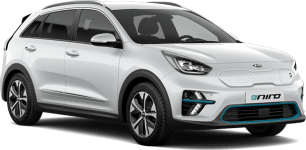The e-2008 looks great but what about the practicality? Well, let’s just say the front row benefits the most in terms of everything – space, comfort and features. If you’re a super tall family, this might not be the car for you.
I felt perfectly happy when it was just my son and me but as soon as my husband jumped in, it started to feel a bit claustrophobic in the cabin.
There are a few reasons why, though. You knock elbows with your front passenger, if you have a cup in one of the centre console cupholders it gets in the way of the transmission shifter and you knock your feet on the too-high door aperture. I felt clumsy getting in and out of this car.
That said, the seats are comfortable and you could easily do a longer trip in them. It's curious that the front passenger seat and the sunblind for the panoramic sunroof adjust manually. But all in all, I was happy with the comfort in the front.
Individual storage is decent up front for this class with a middle console, glove box, two drink bottle holders in each door plus two cupholders. There is also a large hidden storage cubby above the phone tray that I was able to pop all my loose items away in.
Individual storage is basic in the back seat with the only options being a couple of netted map pockets plus shallow storage bins in each door.
Generally speaking, space is lean in the second row. I’m 168cm (5'6") and sitting behind my driving position, my knees touch the back of the seat.
My videographer and I had a laugh when we were filming the video review for the e-2008 because it was so awkward for him (at 183cm / 6'0") to get comfortable in the back seat! I thus dub it only fit for kids on longer journeys.
The two digital screens look great and the 3D-effect instrument panel is a cool highlight but the multimedia system doesn’t seem to have a lot of accessible information or customisations available.
The screen responds quickly but sometimes the built-in satellite navigation is slow to load. However, I like how easy it is to connect to the wired Apple CarPlay plus it has wired Android Auto for those users.
Charging options are good with each row enjoying two USB-A ports and the front getting a single 12-volt socket. Disappointing that there are no other amenities in the back row, though.
The highlight of the car for me is the boot. It's a good size at 434L and I like the level load space. You have underfloor storage for cables and such but the compromise for getting all of this space is that you only get a tyre puncture repair kit. There’s also no frunk storage in this model.
I missed a powered tailgate because the boot lid is quite heavy to close but otherwise, the boot suited my little family’s needs just fine.






